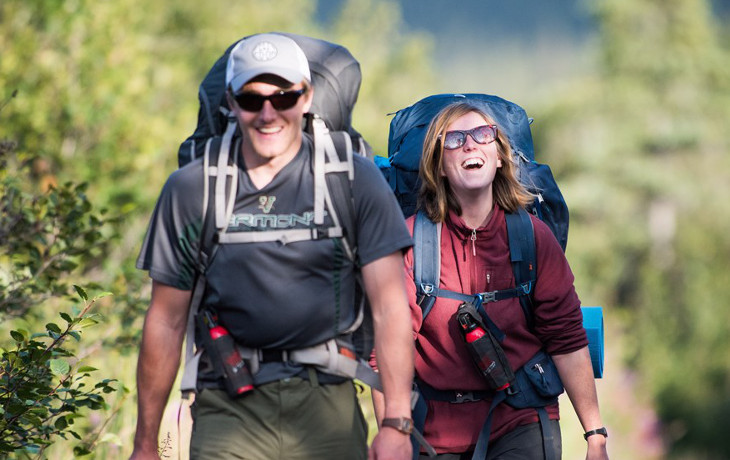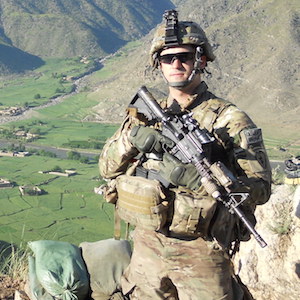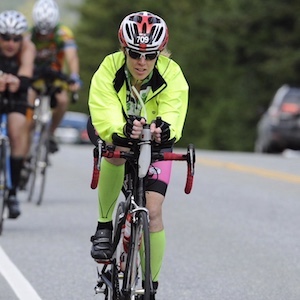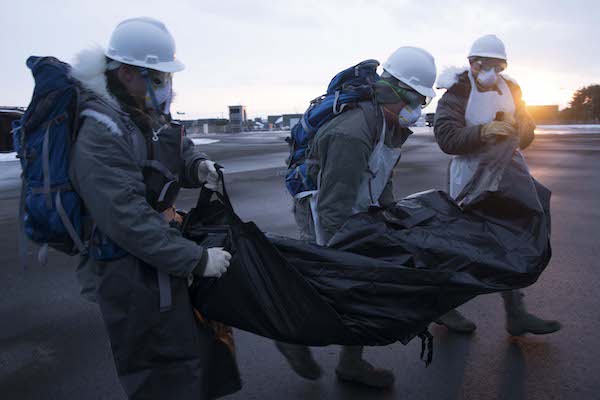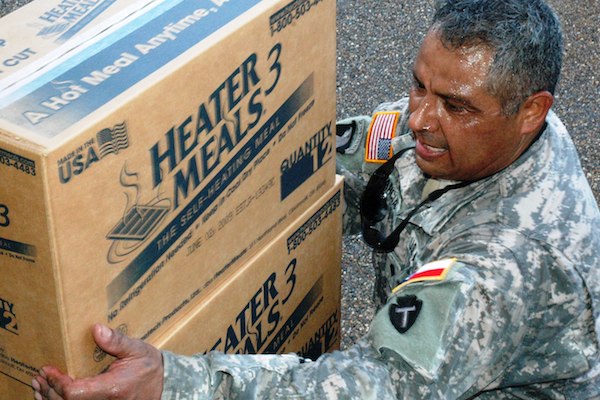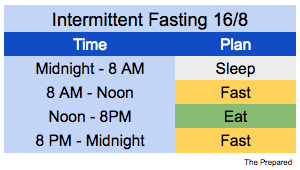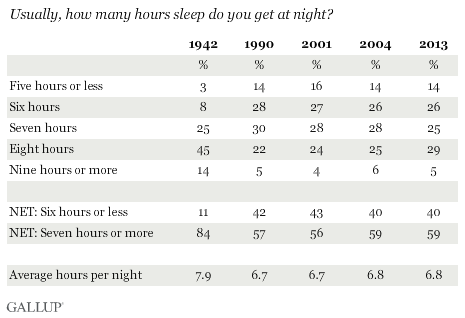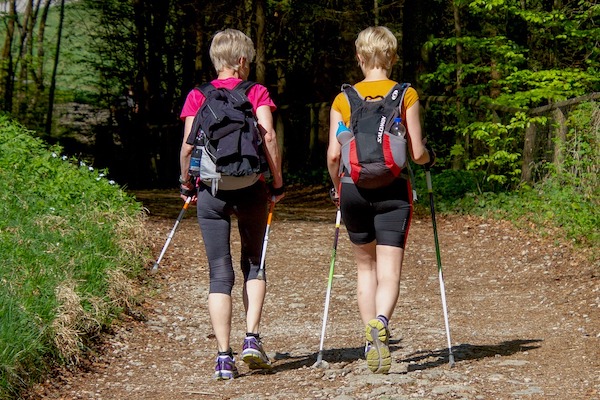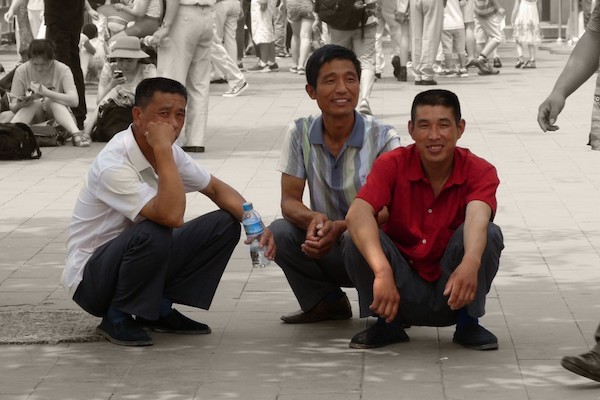Improving your survival fitness is one of the most impactful, no-brainer preparations possible! Yet the majority of people overlook its importance in prepping — mostly because buying some gear is easier than eating better.
Fitness greatly improves your life today, reduces your risk of emergencies, and improves your chance of surviving an emergency.
Most of us aren’t in the kind of shape we want to be, and it’s getting worse. It’s too hard to stay healthy in the modern world: industrialized and junky food, sedentary lifestyles, lack of time for sport and fitness, and deceptive marketing for homeopathic junk and fad exercises you’d find on late-night TV and fringe websites.
Good news: You don’t need to become a gym rat or starve yourself on bland food. There are a few basic, practical things you can start doing today that will have the biggest 80-20 impact on your health with very little extra time or pain.
We specifically want to promote ideas that are easy and approachable by almost everyone so that you actually embrace it.
The hardest part is simply getting started. The key is to make these little changes in your daily habits. Remember that it takes about 2-3 weeks of doing something consistently for it to become a habit.
This guide is for the average American — which sadly means unhealthy, out of shape, and eating poorly.
But even if you’re obese or over 60, these few tips can change your life. It’s never too late to start.
Skip this guide if you’re already pretty fit and understand the basics, like the difference in goals between high rep and low rep lifting or what a good target heart rate is for cardio. There’s no special formula for survival fitness other than focusing on your well-rounded functional fitness: strength, endurance, and mobility.
- Why you should trust us
- Why this is worth your time
- Fitness goals for prepping
- Basic fitness principles
- Functional training mimics real emergencies
- Quit smoking
- Eating well and losing weight
- Vitamins and supplements
- Intermittent fasting
- Sleep tips
- Just go for walks
- Stretches and agility
- Posture and how to counteract sitting
- Bodyweight exercises
- Gym and equipment exercises
- Sports, clubs, and classes
Why you should trust us
Joe Laws is a recently-retired US Army Ranger turned certified personal trainer with a degree in Biomedical Engineering. Joe built the popular app Optimize Fitness that uses artificial intelligence to personalize your workouts. He led a platoon in the mountains of Afghanistan, where they’d carry 100 pound rucks over 10 mile hikes in 90 degree heat on less than 1,500 calories and 2 hours of sleep a day.
Dr. Andrea Chymiy is a family and urgent care doctor by day, and a prepper by night, blogging at Lefty Prepper Mom. Andrea is currently training for her 5th Ironman triathlon, competes in masters rowing, and enjoys kickboxing.
Be prepared. Don’t be a victim.
Want more great content and giveaways? Sign up for The Prepared’s free newsletter and get the best prepping content straight to your inbox. 1-2 emails a month, 0% spam.
Why this is worth your time
- Being healthier is always a good thing. Physical fitness impacts mental health, too! You’ll perform better at work, feel better about yourself, and take better care of those you love.
- Being healthier means you reduce the chances of emergencies like heart attacks, strokes, sprains, and breaks — some of the most common scenarios you’re likely to face.
- The more fit you are, the higher your chances of surviving an emergency as it happens. Especially the nasty SHTF types.
When an emergency strikes, you might suddenly need to do lots of activity, such as walking, digging through rubble, carrying a hurt family member, lugging your bug out bag, and so on.
You might need to survive on less calories, less nutrition, and less sleep. You might be shivering in the cold or baking in the sun.
Your body will feel the stress of the emergency. Ask any doctor: Stress is a massive strain on your body. It makes you less effective and can trigger underlying health issues. The last thing you want is to have a preventable medical problem while struggling to survive.
Exercising is a way to put stress on your body. Stress is what makes muscles grow, for example. So being fit means your body is used to stress and will handle it better in an emergency.
Humans have biological responses to help with emergencies, like adrenaline pumping into your body to outrun a predator or the fat stored in your belly to make up for lost food. But it has limits, and those natural chemical defenses get weaker as you become less physically fit.
If you think “I don’t need to be fit, I’ll just use my guns to defend myself or take what I need”, then you’re stuck in a common survival myth.
Survival fitness goals for emergency preparedness
- Improve general health by reducing the unfortunately all-too-common risky stuff: obesity, heart disease, diabetes, hypertension, stroke risk, and so on. These issues increase your risk of emergency and make it harder to survive non-medical emergencies.
- Improve stamina so that you can walk further, climb difficult terrain, keep your wits with less sleep, etc.
- Improve strength so that you can carry your gear, cut through wood, build a shelter, etc.
- Improve mobility so that you can bend, twist, scrunch, and balance your way through obstacles and uncomfortable conditions.
Speaking practically, you’re prepared if you can:
- Comfortably survive on 1,500 calories per day with high physical activity or stress
- Carry a 30 pound backpack on foot for 10 hours
- Lift a 7 gallon water container (55 pounds) and walk 100 feet
- Drag or carry a 150 pound person for 100 feet
- Hike 5 miles in the woods, kill a deer, break it down, and carry it out
- Climb over a car or large obstacle
- Run/jog one mile over unpaved ground
- Swim across an average river
- Escape from or defend yourself against an opponent
- Spend the day gardening without destroying your joints or back
Basic fitness principles
- There are no Golden Answers. Find what works for you. The most important thing is to just get moving!
- Change one variable at a time. Try eating less for a few weeks. Then eat better. Then start walking. Then do some cardio. If you try to change too much at once, it won’t stick.
- Weave it into your daily routine. A few minutes of stretching when you get out of bed. A few push ups or planks in your cubicle as a work break. Skip the elevator and take the stairs. Park at the furthest end of the parking lot. And so on.
- You don’t need to go to a gym or spend money on gimmicks. Keep it simple.
- If you struggle with sticking to it, research shows that being a part of groups/communities or scheduling with a friend makes a huge difference.
- The less you use your body, the more it withers and falls apart. Our modern sedentary lifestyles are a key reason why health is tanking.
- Eat less calories than you burn. This is the direct cause of weight gain and one of the most important principles.
- What you eat matters. Try to eat the kind of food people will grow, catch, or hunt after SHTF.
- Sleep is very important. Keep a consistent schedule and reduce electronics in bed.
- Mental health and physical health are connected. For example, mental stress hurts your body.
Tip: There’s a basic rule in life that “what gets measured, gets optimized”. Which is why people love their scales and personal health trackers like the Apple Watch or Fitbit. Seeing the numbers behind your progress makes a huge difference!
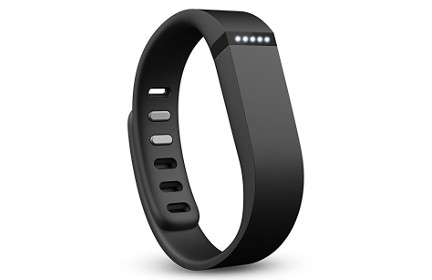
Fitbit Activity Wristband
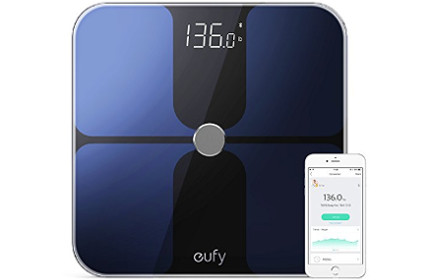
eufy BodySense Smart Scale
Use functional training to mimic real emergencies
Think about the stereotype of a strong farm boy. They’re not cut like a bodybuilder or lean like a marathon runner, but they’re generally more survival fit than both. Their fitness comes from functional work, the daily movements of working on a farm. Their fitness matches their needs because it came from doing what they needed.
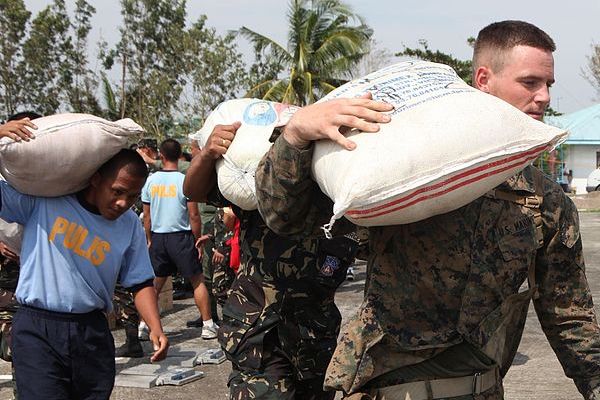
It’s simple when you think about it: You want to get better at survival fitness, so do the things you would do in a survival situation! Examples:
- Go for long hikes with your Bug Out Bag
- Walk home from work with your Get Home Bag
- Fill up and carry water for a mile using your 5-7 gallon emergency water container
- Carry your partner/child as if they’re injured
- Hold your rifle up for 5-10 minutes
- Chop and carry wood
Prepper bonus: Not only does this mean you don’t need a gym membership and can exercise at home or while traveling/working, but it also gets you practice with your survival gear and skills while learning more about the area around you.
Quit smoking!
Have you ever met someone who quit smoking and regrets that they stopped? Probably not.
More: American Lung Association’s “I Want To Quit Smoking”
Prepper bonus: Not only is smoking cigarettes one of the stupidest things you can ever do to your body, it creates a strategic weakness for preppers. You’re addicted to something that will be hard to get in an emergency, which reduces your mental and physical potential.
Think about it from the flipped perspective. Many preppers keep packs of cigarettes in their supplies, even though they’re non-smokers, because they know they can barter cigs for supplies/help from addicted smokers itching for a fix during an emergency. Don’t be that guy.
Eating well and losing weight
Losing weight is not rocket science. The answer is simply eating less/better and exercising more.
The single greatest factor is calorie intake. Most people burn around 2,000 calories per day, but consume around 2,500-3,000. Extra calories = stored fat.
It’s only been about 100 years that most people have had access to a steady abundance of food. Our bodies evolved in a world where calories were few and far between, so the body thinks it needs to hold on to those spare calories.
You can eat whatever you want — just eat less of it!
America is known for having portions that are too large. This is one of the main cultural reasons why Europe has lower obesity rates than the US, even though the food itself is mostly the same.
“Drink more water!” — Every doctor and trainer ever
Experiment with leaving some food on your plate, so you can break the habit of finishing every piece put in front of you. Better yet, put smaller portions on your plate so you have to intentionally get up for second servings.
Try to eat when you’re hungry. Many people tend to eat just for the sake of eating, habits, stress, and so on. Not hungry? Don’t eat!
Once you’re comfortable with eating less, try eating better
You often hear rules of thumb like:
- If you can’t pronounce the ingredients, don’t eat it.
- If your grandmother wouldn’t recognize it, don’t eat it.
- If it’s available in a common gas station, don’t eat it.
Prepper tip: If people can’t grow, catch, or make it after SHTF, avoid eating it now.
All of those tips, and in fact most modern diet programs, are simply ways to get you to avoid overly-processed foods full of junk.
Sugar is the enemy. Even breakfast in America has effectively become “morning dessert”. Sugar is everywhere, and it’s killing all of us. There’s growing evidence that the food industry has known for decades that sugar was the real enemy. There’s even evidence of cover-ups, where food companies tried to paint salt and fat as the enemy in order to distract attention.
Try to eat more fruits and veggies. Complex carbs, like those found in grains and legumes, are better than simple carbs found in fruits or sugars. Healthy fats come from food like nuts and avocados.
More: If you want to go further and follow established diets, we recommend paleo and keto. They closely mimic the kinds of foods our ancestors used to eat (which means our bodies are built for those diets) and they mirror what you’d eat in a post-SHTF world.
Vitamins and supplements
There’s a growing body of research that multivitamins aren’t worth it. In fact, some supplements that were heavily promoted for years are now found to increase the risk of cancer.
And we certainly ignore the magical-voodoo supplements or unverified junk promoted around the internet. Unfortunately, there are simply no wonder-drugs you can take that will shortcut the need for a healthy diet and light exercise.

There are a few specific vitamins and supplements that are considered worthwhile. For example, many doctors recommend zinc to help with a common cold, whereas studies show Vitamin C doesn’t work at all.
Vitamin D is essential, but we don’t get enough of it from our food. We used to get plenty from being in the sun. But as our lives move more indoors, many people aren’t getting enough. Studies show that long term use of Vitamin D supplements increases bone strength and lowers the risk of death across the board.
Intermittent fasting
Intermittent fasting is becoming quite popular, and unlike most fads in the health and weight-loss markets, the results of IF seem to back up the hype.
IF is a repeating cycle of short periods of time without food.
This alternating cycle of food and no food encourages your body to burn fat, flush out cellular waste, increase energy levels, etc. There’s even growing evidence that a 24-hour fast can kickstart your body’s stem cell factories.
There are various models people follow. Some go 1-2 days without eating anything at all, then 1-2 days like normal, repeat.
But we recommend a simpler daily model. Start off by eating only between 11 AM and 9 PM, every day. Then try to tighten that window, perhaps to 12-8 PM. (Some of The Prepared’s writers follow a 12-8 or 1-8 PM daily model.)
Water is always good during a fast. Coffee or tea is usually fine as well, as long as the drink is under 50 calories, which keeps your body in the fasting state.
IF has an added benefit of reducing sugar, caffeine, and snacking before bed. You want to sleep on an empty stomach, because you won’t feel hunger while you’re sleeping and your body stores more fresh calories than normal since it’s not burning as much. Snacking before bed is just a waste.
Prepper bonus: IF also has a bonus effect of getting your body used to inconsistent meals — something very likely in a major emergency.
Most people (especially in America) eat way too much food too often. Big meals for breakfast, lunch, and dinner with snacks in between.
That trains your body to expect lots of calorie and nutrient input every few hours. So your biological rhythms adapt to meet that pattern.
An example consequence is that your body has been trained to prefer simple carbs (which are unhealthy or “empty”) that can be broken down and used quickly, rather than complex carbs (healthier) that take hours to break down, because your body has been trained to expect that it will get more simple carbs soon.
When you’re suddenly in a situation where that pattern is broken, your body can freak out. IF trains your body to be ready for inconsistency.
The importance of sleep
Sleep is vital — if it weren’t, our bodies wouldn’t spend a third of our lifetime doing it.
Besides the obvious mental health benefits, sleep gives your body time to repair and grow, such as regulating hormones and protein synthesis to grow your muscle after working out. Not getting enough sleep also leads to a slower metabolism, since your body thinks it needs to stretch calories out over a longer day.
About half of people in developed countries get less than the recommended amount of sleep. It’s getting worse: Americans are sleeping an average of 1.2 hours less per night than when studies started in the 1940s.
Tips:
- Break the habit of using your phone/tablet in bed before sleeping. Try not to look at screens for 30-45 minutes before you plan to sleep.
- The blue light from computer/phone screens tricks your brain into thinking it’s daytime. Use software like f.lux that automatically changes the “temperature” of your screen to be softer at night.
- Set Do Not Disturb schedules on your phone. Instructions for Apple and Android.
- Don’t eat before bed (see IF above).
- Keep a consistent sleep schedule. Research shows that going to sleep and waking up at the same time (including weekends!) helps you stay regular and rested. Exception: If you get a horrible amount of sleep on work nights (~5 hours), sleeping in on weekends can save your life.
Just go for a walk!
That’s it. Just go for 20-minute walks a few times a week.
In the beginning, just build the habit. Go as slow as you want. Over time, treat the walk as mild exercise. You shouldn’t be gasping for air, but should be at the point where you’ve got a little bit of sweat or increased heart rate. Go further. Start jogging, maybe even running.
More: There’s an app for running where you pretend to escape from zombies! Another popular running program is Couch to 5K.
Tip: Walk with your Bug Out Bag to get a feel for how much weight is right for you!
Prepper bonus: You’ll learn more about the areas around where you live and work. It’s amazing how we can miss things nearby even after living somewhere for years. That knowledge will come in handy during a crisis.
Stretches and agility
Mobility/flexibility is an undervalued part of fitness. Which is why there’s a common gym joke about bodybuilders with huge muscles that can’t even raise their arms above their head.
Not only does it make you more agile, helping emergency movements like climbing and squeezing, but mobility also reduces the chance of injuries like sprains and broken bones and improves your balance and coordination.
It’s easy to add a 3-minute stretching habit to your day. Try doing these in the morning or as a way to take a break from work.
Tip: If you’re older or have physical limitations, check out Tai Chi.
Dynamic stretches (where you stretch by moving) are generally better than static stretches (the old 1970s high school gym class stretches where you reach and hold). Examples:
It frankly doesn’t matter what movements you start with. Just get moving beyond your normal couch potato ranges!
Yoga is popular for a reason. It can get a little “woo” for some people, but that depends on the trainer/classes you take. But you can also do yoga at home without spending a dime!
A common and easy yoga movement is the Surya Namaskara, which means “Sun Salutation”, of which there are two versions (A and B). A quick video:
Prepper bonus: Practice the Asian Squat!
Babies squat down between their legs because it’s a natural human movement. But over time adults in western society stopped doing it in favor of sitting, to the point where it hurts to even try.
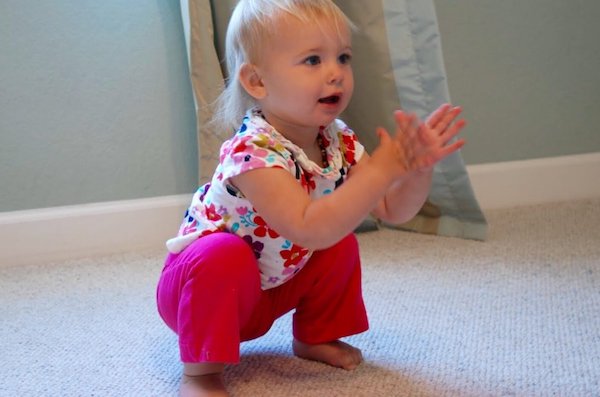
Yet it’s still extremely common in Asia, to the point you see adults squatting as a way to hang out in a park or wait for the bus.
Not only is this a great way to work on flexibility and strength in your hips, legs, and spine, it can be a great way to sit down when there isn’t a comfortable surface or chair — could be handy when SHTF!
Keep your feet flat. You’ll probably have difficulty at first, but keep practicing and it becomes quite comfortable.
Posture (and why sitting is the new smoking)
Our bodies are built to move, not to sit still. Public health officials are starting to ring the alarm bells that sitting is the new smoking.
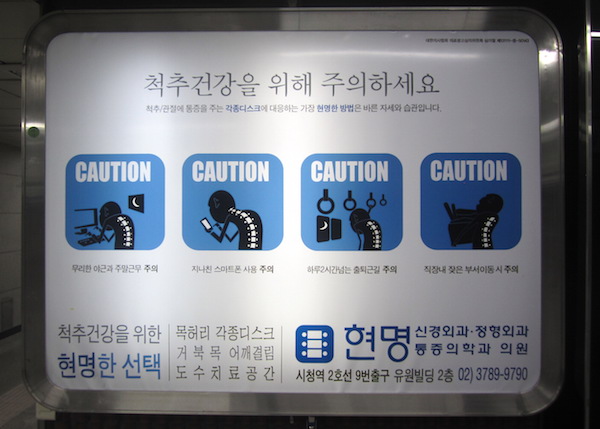
Modern lifestyles are forcing our bodies to break down — like sitting at a computer all day or slouching on a couch.
This results in imbalances, muscles shrinking and overloading, spine deterioration, back pain, neck pain, headaches, loss of agility and flexibility, horrible posture and the resulting lack of image/confidence, and so on.
Some of the visible symptoms are a belly/butt that sticks out (called anterior pelvic tilt), rounded shoulders, hunchback, and forward head posture.
The amount and quality of free info online for these issues has really grown in recent years (to match the massive rise in people with these problems). There’s more than one way to work on this, so find a YouTube channel you like.
Tips:
- If you want to work with a doctor or trainer, skip the traditional chiropractors and work with physical therapists who focus on strength, imbalance, and flexibility.
- Adjust your workspace to map to your body’s needs: try a standing desk that can switch between normal and standing, different chairs and chair positions, etc.
- Raise your computer monitor so that your natural eyesight line is about 25% below the top of the monitor. A cheap hack is putting the monitor on top of stacks of printer paper.
- When sitting in a chair or couch, move your butt all the way back into the pocket as far as it can go.
- Pay attention to how you hold your phone throughout the day. Raise it up to meet your face, don’t lower your face to meet your screen.
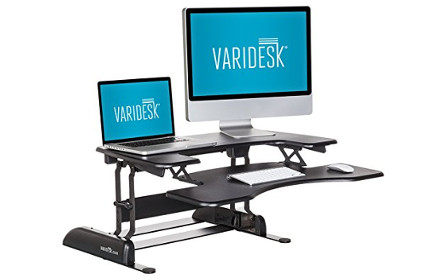
Make your workstation work for you:
Varidesk Adjustable Height Desk
Bodyweight survival exercises you can do anywhere
You don’t need to go to a gym. Just move your body beyond the normal couch-potato routine!
Many of these bodyweight movements can be modified with extra weights (dumbbells, bands) or functional weights (like a full 5 gallon water can).
Prepper bonus: You can do these exercises anywhere and modify them with almost anything. Perfect for when SHTF.
More: Reddit r/bodyweightfitness
Bulgarian split squat
One of the best leg exercises you can do. Builds strength throughout your leg and hips while also working on stability and stretching out some of the hip flexors that get tight from sitting too much:
Crunches (not sit ups)
Sit ups are falling out of favor in the training community because it’s easy to do them incorrectly, putting the wrong kind of strain on your spine.
Plus, one of the consequences of sitting all day is that most people’s hip flexors (the muscles that connect your thigh to your tummy) shorten over time, so you don’t want to tighten them further via exercising them.
Crunches are a modified sit up that focuses on your abs:
Planks and prone back extensions
Two of the best whole-core exercises. Just do as much as you can (probably 30-60 seconds to start) and go a little further each week. Once they get too easy, go for dynamic planks.
Planks:
Prone back extensions:
Pushups
The classic — but so many people get the form wrong, namely by flaring their elbows out. Follow this:
Burpees
A whole-body movement that’s a combo cardio and strength workout. Easy to modify.
Gym and equipment exercises
If you’re healthy enough to go beyond the bodyweight and functional movements, going to the gym 2-3 days a week for 60-90 minutes can really ramp up your survival fitness.
Focus on well-rounded exercises that improve your overall strength and stamina. In weightlifting these are sometimes called power or compound lifts, most of which we list below.
Tip: Use an app like Optimize to guide and track your gym routines. It can even personalize your workout based on what equipment you have available and how you’re progressing. If you prefer in-person help, don’t be afraid to work with a personal trainer, even if just for a few sessions!
More: If you want to follow a beginner’s workout plan, check out StrongLifts 5×5 or Starting Strength.
Deadlift
Picking heavy things up off the ground is obviously a core survival movement. Form is very important, but often done poorly, namely by lifting with your back instead of your legs. Press through your feet into the ground:
Back squat
The mirror opposite of a deadlift, back squats mimic carrying heavy things on your shoulders/back.
Bench press
Another core lift that is often done incorrectly, usually by flaring the elbows out:
Kettlebell squats / swings
Great with kettlebells or anything heavy that you can easily grip. This is also a great bodyweight movement you can do while on the road or at home:
Farmer carry
Remember the farm boy example for functional training? This is a perfect exercise to mimic carrying heavy/awkward things.
You can do this with anything heavy (barbell plate, dumbbell, kettlebell, water container, sandbag, children…) that you can hold in one hand. We like the one-hand-at-a-time version because it really works your core in order to keep your torso upright (instead of bending over to the heavy side). This improves your grip strength, core/abs, shoulders, etc.
Rowing machines
The best full body cardio workout!
Sports, clubs, and classes
Besides being more fun, working out through sport or in clubs/classes is proven to increase your chances of success because the social connections help you keep up the habit — instead of the typical “new year’s resolution that’s abandoned by February” problem.
The best group activities for building up your survival fitness level:
- Any common neighborhood “pick up” sport like basketball, soccer, or racquetball.
- GoRuck Challenge. Based on Special Forces training, this is a very relevant event for preppers (you even carry a backpack) that’s similar to a weekend marathon. Plus you’ll connect with like-minded people! They also have a 6-week training plan.
- CrossFit. Currently quite popular with classes available in almost every US town, this group-oriented training program is based on a wide range of practical/functional exercises. Many people like it for the social, peer-support elements.
- Yoga. Available almost everywhere. Easy to get started, and most studios offer a first class for free. Yoga has become a practical way for everyone (yes, including burly men) to get fit.
- Tai Chi. If you’re older or have difficulty with normal exercise, Tai Chi is a great way to get moving. You might recognize this Chinese exercise from senior citizen groups in public parks.
- MMA (Mixed Martial Arts). Strength, stamina, and coordination training while learning how to fight. We prefer this over more traditional “fighting” clubs like boxing and karate because it’s a better workout and more applicable to real world defense.
- Krav Maga is another good self defense physical activity. Derived from the Israeli Defense Force training.
- Road biking groups. A good way to stay fit, hang with friends, and learn more about your local area (bug out routes!)
For online communities, we lean towards Reddit for most fitness topics. Here’s a good overview list.
